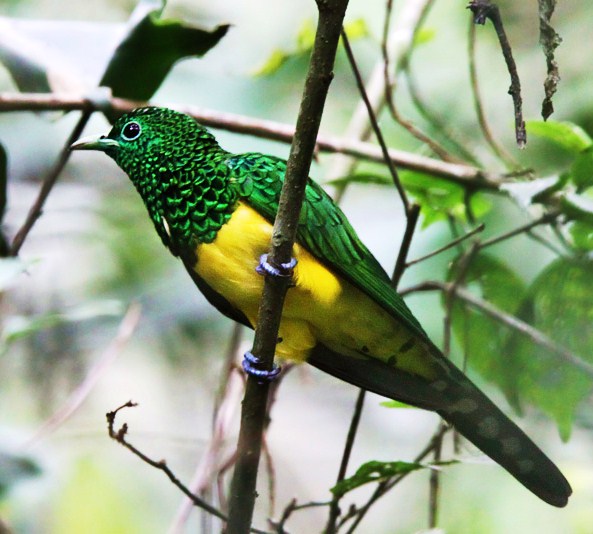Chrysococcyx cupreus
 |
| Photo by Jonas Rosquit (PBase) |
Common name:
African emerald cuckoo (en); cuco-esmeraldino (pt); coucou foliotocol (fr); cuco esmeralda (es); smaragdkuckuck (de)
Taxonomy:
Order Cuculiformes
Family Cuculidae
Range:
This species occurs throughout much of sub-Saharan Africa, excluding extremely arid areas. They are found from Senegal, across Mali and Nigeria and into Sudan and Ethiopia, and south all the way to South Africa. This species is also present in the São Tomé and Príncipe archipelago.
Size:
The African emerald cuckoo is 22 cm long and weighs 35 g.
Habitat:
It generally prefers evergreen and riparian forest, dense woodland and moist savanna, occasionally moving into well-wooded suburbs.
Diet:
African emerald cuckoos do most of their foraging in the middle and upper forest canopy. They mostly eat caterpillars and grasshoppers, supplemented with adult Acraea butterflies and fruits such as the wild peach Kiggeleria africana.
Breeding:
They are promiscuous, territorial brood parasites. Each male defends a display territory and mates with multiple females, which then lay their eggs in the nests of other birds. Their hosts include the green-backed camaroptera Camaroptera brachyura, the white-starred robin Pogonocichla stellata, the yellow-throated woodland-warbler Phylloscopus ruficapilla and the black-throated wattle-eye Platysteira peltata. They breed in October-January and each female lays a single egg in each host nest, after destroying one host egg, for a total of about 20 eggs over the whole breeding season. The eggs are incubated by the hosts for about 16 days. The chick kicks out any of the host’s eggs or nestlings at about 2 days of age, and fledges about 22 days after hatching.
Conservation:
IUCN status – LC (Least Concern)
The African emerald cuckoo has an extremely large breeding range and is reported to be fairly common. Despite ongoing destruction of riparian and lowland forest across their range, the population is suspected to be stable in the absence of evidence for any declines or substantial threats.







